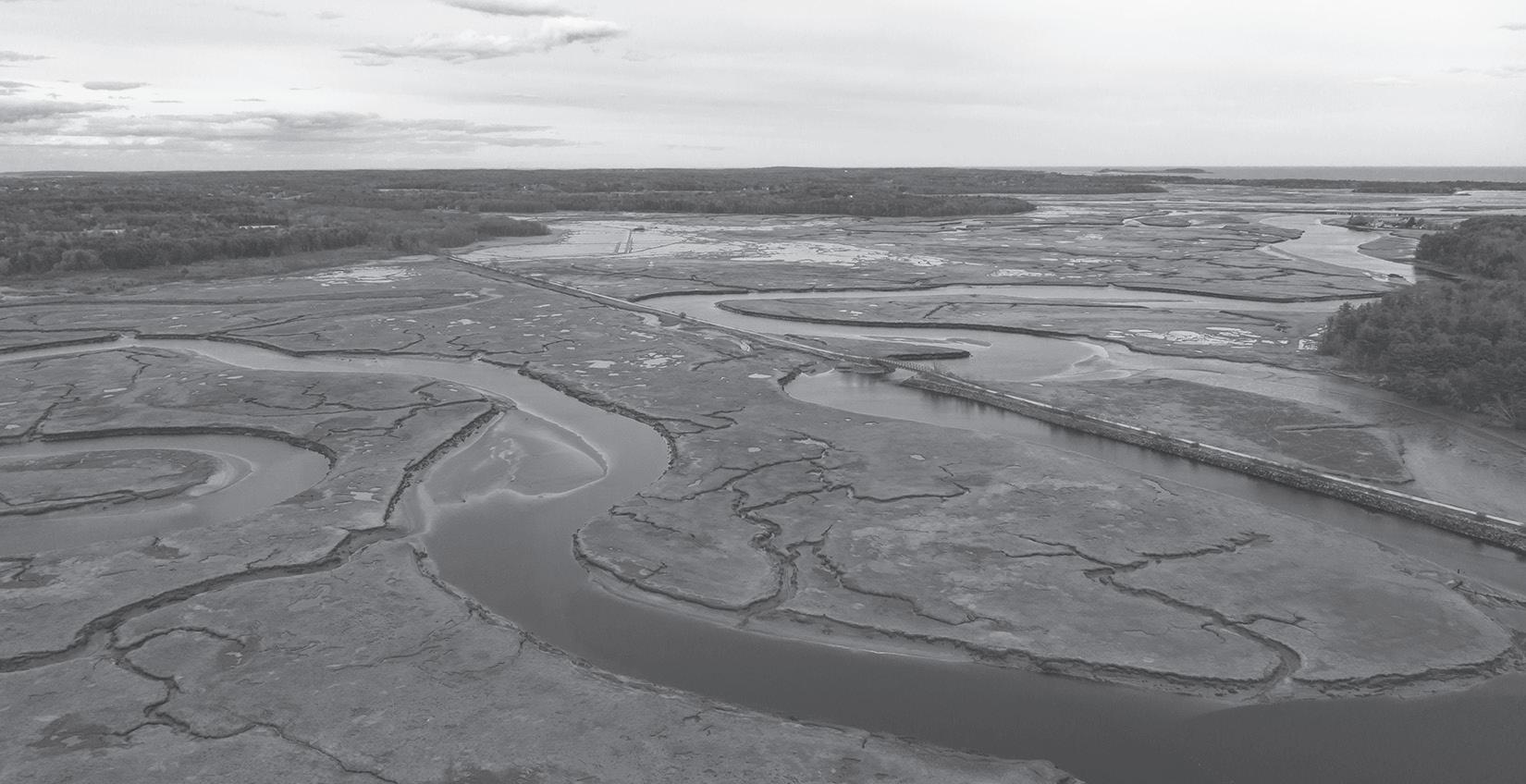
1 minute read
A delicate dance between sea and land
BY CATHERINE SCHMITT
Behind the forested dunes of Popham Beach, where the Kennebec River finally meets the sea, is an extensive salt marsh. Great blue herons hunt for eels amid blooms of sea lavender and milkwort; saltmarsh sparrows search for spiders in the grass.
Advertisement
As in all marshes, the grasses and rushes each have their own unique tolerance for salt and flood, and their growth reflects tidal patterns, with fine smooth salt hay and black rush in the upper zones that only flood occasionally, and wider cordgrass along edges, creek banks, and low areas.
With each high tide, plant stems slow the rush of water, allowing sand and silt to settle to the marsh surface before the ebb. With each season, organic matter accumulates as plants grow and die, and their roots and stems build peat in the saturated soil.
In this way, above and below the surface, salt marshes flourished with the gradually rising sea for thousands of years.
It’s a delicate relationship, however. Any changes, like more frequent flooding, less sediment being delivered, or plants growing faster, can disrupt the equilibrium. Marshes are also








